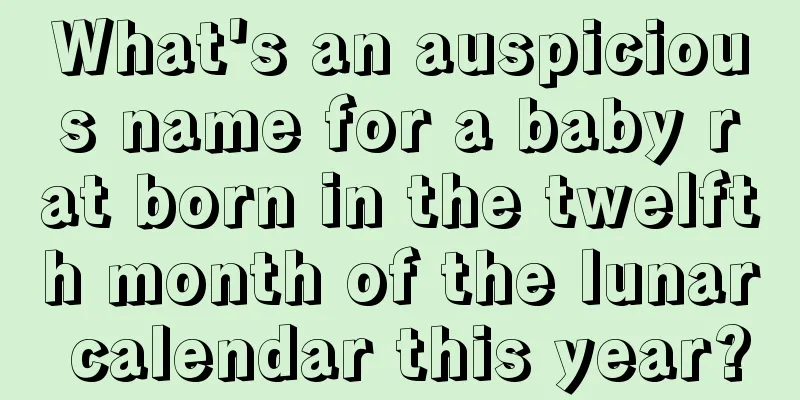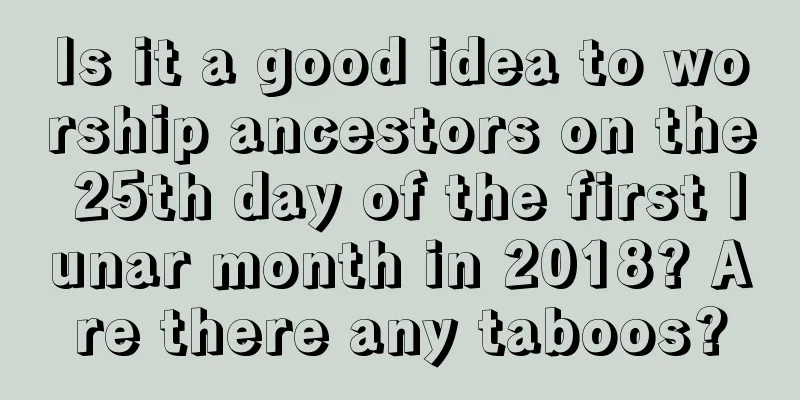What do people eat on the Double Ninth Festival?

Introduction: Our country’s traditional festivals include many customs, and on the Double Ninth Festival, there are certainly many food customs. The Fortune Teller website has compiled special content about the Double Ninth Festival to help you better understand the festival significance of the Double Ninth Festival.What do people eat on the Double Ninth Festival?1. The custom of eating Chongyang cake is related to climbing heights. "Gao" and "gao" are homophones of each other. As a festival food, it was originally intended to celebrate the autumn harvest and enjoy the new grain. Later, people started to climb high places and eat cakes, which meant to get the auspicious meaning of climbing higher and higher. In the north, the custom of eating Chongyang cake is particularly popular.Chongyang Cake is also known as flower cake, chrysanthemum cake and five-color cake. There is no fixed method to make it and it is rather casual. There are "rough flower cake", "fine flower cake" and "money flower cake". Some coriander leaves are stuck on it as a mark, and rough dried fruits such as green fruits, small dates, and walnut kernels are sandwiched in the middle; the Xihua cake has 3 or 2 layers, and each layer is sandwiched with thinner candied dried fruits, such as apple preserves, peach preserves, apricot preserves, black dates, etc.; the Jinqianhua cake is basically the same as the Xihua cake, but it is smaller in size, like "gold", and is mostly the food of the upper-class aristocrats. It is said that in the early years, people used leavened bread stuffed with dates, chestnuts and other fruits, or steamed glutinous rice or yellow rice flour into sticky cakes, which looked like flower cakes with "gold on top" and "silver on the bottom". Later, the Double Ninth Festival cake evolved into many varieties with numerous names, such as the "Spring Orchid and Autumn Chrysanthemum" with different fruit ingredients such as pear, orange and pomegranate; the "Lion Cake" with chestnut, ginkgo and pine nut as seasonings and shaped like a lion's face; and the "Food Cake" with several deer seeds placed on the cake, which is a homophonic sound of "Lu" in "Fu Lu Shou". 2. Drink chrysanthemum wine. Chrysanthemum blooms in autumn and is frost-resistant and cold-resistant. It has the effects of relieving wind, improving eyesight, clearing away heat and detoxifying. Since there was a legend in ancient times that drinking chrysanthemum wine could make people immortal, chrysanthemum has been regarded as a symbol of longevity. According to records in ancient books, the custom of drinking chrysanthemum wine on the Double Ninth Festival had become an established custom at the latest in the Western Han Dynasty, and was closely linked to other customs such as climbing heights and appreciating chrysanthemums on the Double Ninth Festival. Chrysanthemum wine is usually brewed on the Double Ninth Festival of the previous year and is ready for drinking on the Double Ninth Festival of the following year. In ancient times, chrysanthemum wine was regarded as an "auspicious wine" that must be drunk on the Double Ninth Festival to ward off disasters and pray for blessings. In the Ming and Qing dynasties, various herbs were added to chrysanthemum wine, making it even more effective. The preparation method is: use chamomile flowers to decoct juice, use koji and rice to make wine, or add rehmannia, angelica, wolfberry and other medicines. Because chrysanthemum wine can dispel wind and heat, nourish the liver and improve eyesight, and reduce inflammation and detoxify, it has high medicinal value. Li Shizhen, a medical scientist in the Ming Dynasty, pointed out that chrysanthemum has the effects of "curing headaches, improving eyesight and ears, removing fistulas, and curing all diseases." Chrysanthemum wine is a wine made from chrysanthemum, glutinous rice and koji. It was called "longevity wine" in ancient times. It tastes cool and sweet, and has the effects of nourishing the liver, improving eyesight, strengthening the brain, and delaying aging. There are three types of chrysanthemum wine: wolfberry chrysanthemum wine, flower cake chrysanthemum wine, and white chrysanthemum wine. 3. Eat crabs. Another food on the Double Ninth Festival is crabs. The poem by Zheng Banqiao: "As the Double Ninth Festival comes, hold the crab claws and cut young ginger." is the evidence of the tradition of eating crabs on the Double Ninth Festival. Crabs are rich in protein and are known as high-quality protein foods. Crab meat is relatively delicate, and its muscle fibers contain more than 10 kinds of free amino acids, including relatively high levels of glutamic acid, proline, and arginine, which is very beneficial for people who need nutritional supplements. Crabs are low in fat but high in fat-soluble vitamins A, E and B vitamins. Crab roe is especially rich in vitamin A, which is beneficial to vision and skin health. Remember: eat crabs in moderation and pay attention to the combination. Do not drink tea while eating crabs or within 1 hour after eating crabs. Because boiling water will dilute stomach acid, tea will cause certain components of the crab to coagulate, which is not conducive to digestion and absorption, and may also cause abdominal pain and diarrhea. |
<<: Why do we eat Chongyang Cake on Double Ninth Festival?
>>: When is the Double Ninth Festival in 2017?
Recommend
Is the Grain in Ear Festival on April 14, 2020 a good day? Check the auspicious time for Grain in Ear Festival on June 5!
Introduction: Different days have good and bad luc...
Auspicious dates for marriage in March of 2021
March is late spring, the third month of spring, a...
What does the Jingzhe solar term mean? Is the Jingzhe solar term in 2019 suitable for tomb sweeping and ancestor worship?
Introduction: Jingzhe is an important solar term, ...
Is it a good day to worship ancestors on the 28th day of the first lunar month in 2019? What should we pay attention to?
Introduction: In our country’s tradition, it is al...
What are the do's and don'ts on September 12 of the lunar calendar in 2020?
What are the do's and don'ts on September...
What are the do's and don'ts on the 17th day of the 11th lunar month in 2017?
Winter months are cold, but when everything goes ...
Is it appropriate to sign a contract on September 23rd of the lunar calendar in 2017?
In the workplace, you will always encounter situat...
Is it okay to get married in Jingzhe? How to choose a date for marriage? What should I pay attention to when getting married?
Speaking of marriage, I believe everyone is famili...
Is it suitable to get a haircut on Qingming Festival in 2019?
Is it suitable to get a haircut on Qingming Festiv...
What is the exact time of the Jingzhe solar term in 2022? What is the meaning of the Jingzhe solar term?
During the Jingzhe solar term, thunderstorms arriv...
Is January 28th of the lunar calendar in 2020 an auspicious day? Is it good to travel?
The quality of each day is different, and it is ve...
What is the zodiac sign of a child born on New Year’s Day? Zodiac personality analysis
New Year’s Day is a national statutory holiday, an...
Is it possible to move ancestral graves during the Minor Cold solar term in 2022? What should we pay attention to when moving our ancestral graves?
Moving the ancestral grave is a big event and it r...
Is April 14th of the lunar calendar in 2017 a good day? Is it suitable for getting married?
Introduction: Marriage is a milestone in love for ...
Is the 25th day of the sixth lunar month in 2019 a good day? Is it suitable for signing a contract?
Summer is coming to an end in the sixth month of t...









